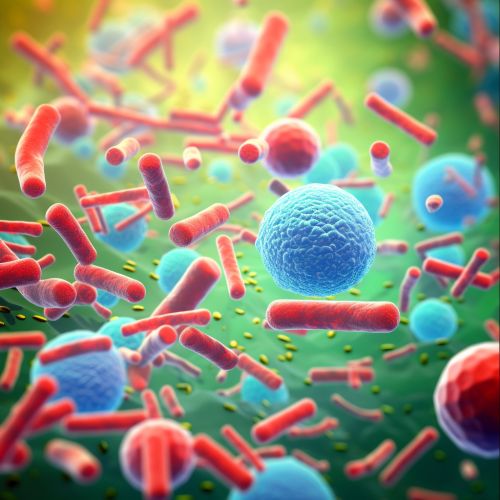Lateral Gene Transfer
Introduction
Lateral gene transfer (LGT), also known as horizontal gene transfer (HGT), is a process in which an organism transfers genetic material to another organism that is not its offspring. This mechanism of genetic exchange is in contrast to the traditional vertical transmission of genes from parent to offspring. LGT plays a crucial role in the evolution of both prokaryotic and eukaryotic organisms, contributing to genetic diversity and adaptation.


Mechanisms of Lateral Gene Transfer
There are three primary mechanisms of lateral gene transfer: transformation, conjugation, and transduction.
Transformation
Transformation is a process in which a recipient cell takes up naked DNA directly from the environment. This DNA can then be incorporated into the recipient's genome. The process was first observed in Streptococcus pneumoniae, a bacterium that can cause pneumonia.
Conjugation
Conjugation involves the direct transfer of DNA from a donor cell to a recipient cell via a physical connection, typically a sex pilus. The transferred DNA is often a plasmid - a small, circular piece of DNA that is separate from the chromosomal DNA.
Transduction
In transduction, bacteriophages (viruses that infect bacteria) carry DNA from a donor cell to a recipient cell. There are two types of transduction: generalized and specialized. In generalized transduction, any part of the bacterial genome can be transferred, while in specialized transduction, only specific parts of the genome are transferred.
Role in Evolution
Lateral gene transfer has a significant impact on the evolution of organisms. It allows for the rapid spread of genes associated with beneficial traits, such as antibiotic resistance in bacteria. This process can lead to the evolution of new species and is a major source of genetic variation.
Detection and Analysis of Lateral Gene Transfer
Detecting lateral gene transfer can be challenging due to the complex nature of genomes. However, several methods have been developed for this purpose, including comparative genomics, phylogenetic analysis, and the use of signature sequences.
Comparative Genomics
Comparative genomics involves comparing the genomes of different organisms to identify regions of similarity and difference. Regions that are highly similar between distantly related organisms may indicate a history of lateral gene transfer.
Phylogenetic Analysis
Phylogenetic analysis involves constructing a tree-like diagram that represents the evolutionary relationships among organisms. If a gene is found in an organism where it is not expected based on the phylogenetic tree, it may be a result of lateral gene transfer.
Signature Sequences
Signature sequences are unique patterns in the DNA that can be used to trace the origin of a gene. If a gene in an organism has a signature sequence that is characteristic of a different group of organisms, it may indicate that the gene was acquired through lateral gene transfer.
Implications and Applications
Lateral gene transfer has significant implications for our understanding of evolution and the history of life on Earth. It also has practical applications in areas such as biotechnology, where it can be used to introduce new traits into organisms.
